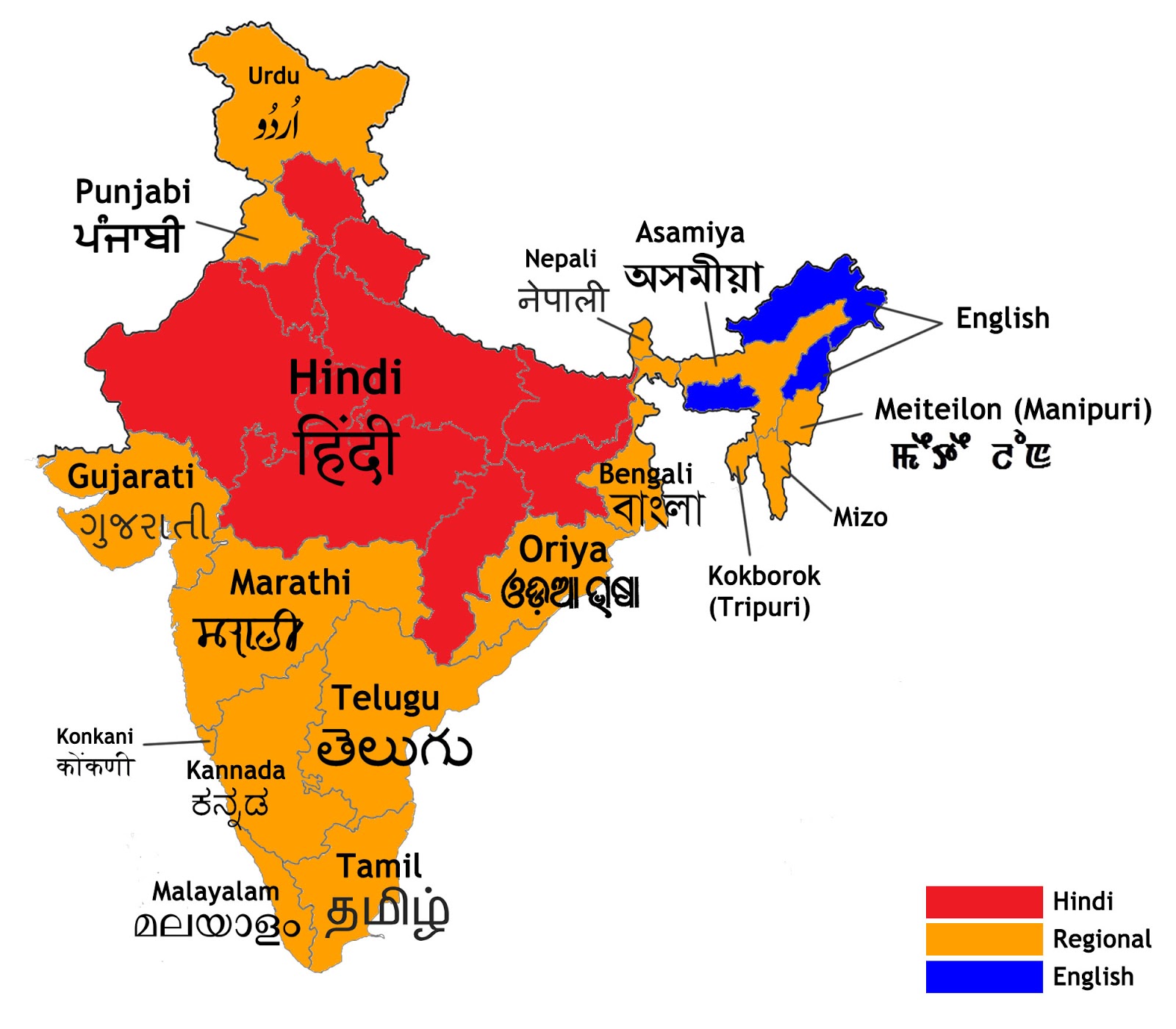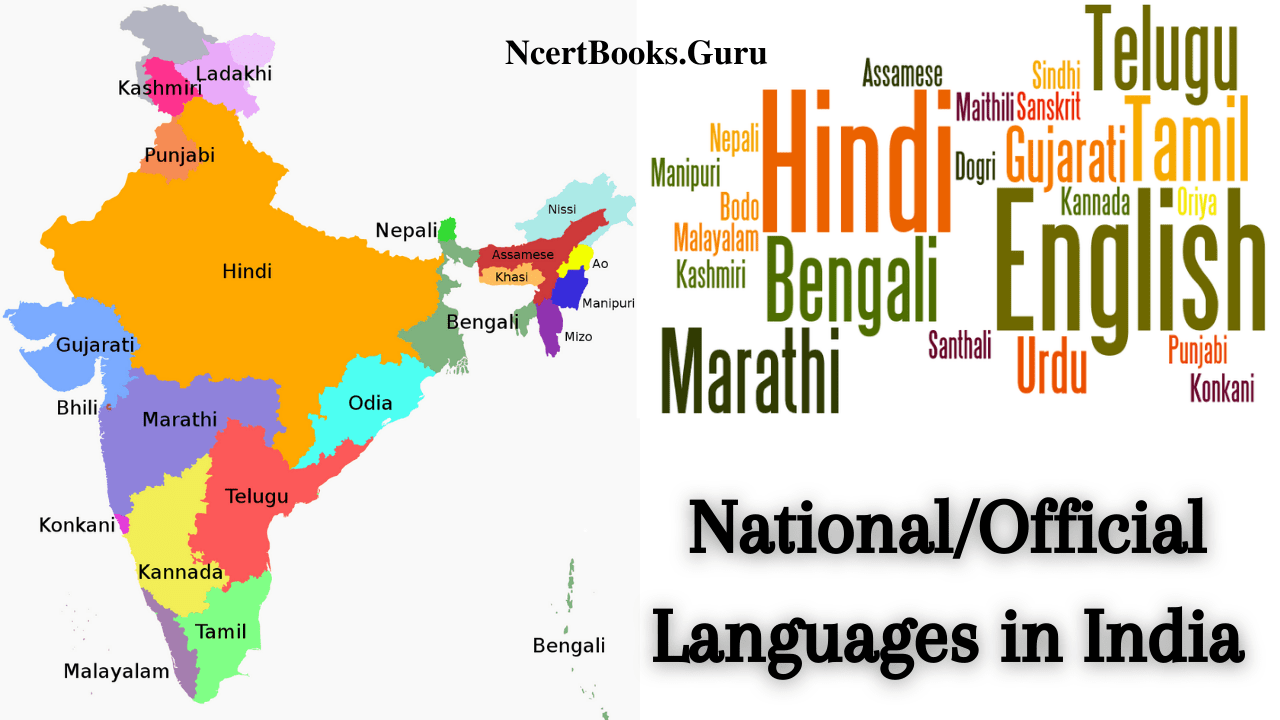Embark on a linguistic journey with our comprehensive India language map, a visual guide to the diverse and vibrant tapestry of languages spoken across the Indian subcontinent. This map unveils the rich history, cultural significance, and geographic distribution of India’s numerous languages.
From the bustling metropolises to the serene countryside, India is a linguistic kaleidoscope, with over 122 major languages and countless dialects. Our interactive map showcases the intricate mosaic of these languages, providing a glimpse into the cultural heritage and linguistic diversity that define India.
Overview of India’s Linguistic Landscape
India is a land of remarkable linguistic diversity, with over 780 languages spoken across the country. The development of languages in India has been shaped by a complex interplay of historical, geographical, and cultural factors.
The roots of India’s linguistic landscape can be traced back to the Indus Valley Civilization, which flourished around 2600-1900 BCE. The language spoken during this period, known as Harappan, is still not fully deciphered, but it is believed to have been a precursor to the Dravidian languages spoken in southern India today.
The arrival of Indo-Aryan speakers from Central Asia around 1500 BCE marked a significant turning point in the linguistic history of India. The Indo-Aryan languages, which belong to the Indo-European family, spread across northern and central India, gradually displacing the Dravidian languages.
Over time, the Indo-Aryan languages diversified into numerous regional dialects, each with its own unique vocabulary and grammar. These dialects eventually evolved into the modern Indo-Aryan languages, such as Hindi, Bengali, Marathi, and Gujarati.
The diversity of languages in India is also influenced by the country’s geography. The vast mountain ranges, rivers, and deserts have acted as barriers to communication, allowing different languages to develop in relative isolation.
In addition to the Indo-Aryan and Dravidian languages, India is also home to a number of other language families, including Austroasiatic, Tibeto-Burman, and Sino-Tibetan. These languages are spoken by smaller communities, primarily in the northeastern and eastern regions of the country.
The linguistic diversity of India is a reflection of the country’s rich cultural heritage. Each language carries with it a unique set of traditions, beliefs, and values. The preservation and promotion of these languages is essential for safeguarding India’s cultural diversity.
Interactive Map
An interactive map can be created to showcase the distribution of languages across India. The map can be color-coded to represent different language families or individual languages. The map can also include information on the number of speakers of each language and the regions where it is spoken.
Major Language Groups in India: India Language Map

India is a linguistically diverse country, with over 122 major languages and 1500 dialects. These languages belong to different language families, each with its own unique characteristics and geographic distribution.
The major language families present in India are:
- Indo-Aryan
- Dravidian
- Sino-Tibetan
- Austroasiatic
Indo-Aryan
The Indo-Aryan language family is the most widely spoken in India, with over 70% of the population speaking an Indo-Aryan language. The Indo-Aryan languages are descended from Sanskrit, the ancient language of India. The major Indo-Aryan languages spoken in India include Hindi, Bengali, Marathi, Gujarati, and Punjabi.
Dravidian
The Dravidian language family is the second most widely spoken in India, with over 20% of the population speaking a Dravidian language. The Dravidian languages are spoken primarily in southern India and include Tamil, Telugu, Kannada, and Malayalam.
Sino-Tibetan
The Sino-Tibetan language family is spoken by about 10% of the population of India. The Sino-Tibetan languages are spoken in the northeastern part of India and include Tibetan, Nepali, and Bodo.
Austroasiatic
The Austroasiatic language family is spoken by about 5% of the population of India. The Austroasiatic languages are spoken in the eastern part of India and include Santali, Munda, and Khasi.
| Language Family | Geographic Distribution | Prominent Languages |
|---|---|---|
| Indo-Aryan | Northern, Central, and Western India | Hindi, Bengali, Marathi, Gujarati, Punjabi |
| Dravidian | Southern India | Tamil, Telugu, Kannada, Malayalam |
| Sino-Tibetan | Northeastern India | Tibetan, Nepali, Bodo |
| Austroasiatic | Eastern India | Santali, Munda, Khasi |
Regional Languages of India
India is a land of linguistic diversity, with over 22 official languages and hundreds of regional languages spoken across the country. These regional languages have played a significant role in shaping India’s cultural and historical landscape, serving as vehicles for literary expression, cultural practices, and social identity.
The regional languages of India can be broadly classified into several major language families, including Indo-Aryan, Dravidian, Tibeto-Burman, and Austroasiatic. Each language family has its own unique characteristics and has contributed to the rich tapestry of Indian culture.
Indo-Aryan Languages
Indo-Aryan languages are spoken by a majority of the Indian population and are widely distributed across the northern, central, and western regions of the country. Some of the major Indo-Aryan languages include Hindi, Bengali, Marathi, Gujarati, and Punjabi.
Hindi, the official language of India, is spoken by over 400 million people and serves as a lingua franca for communication across different regions. Bengali, spoken in the eastern states of West Bengal and Tripura, is known for its rich literary tradition and is home to renowned poets like Rabindranath Tagore.
Dravidian Languages
Dravidian languages are spoken in the southern regions of India, including Tamil Nadu, Karnataka, Andhra Pradesh, and Telangana. The major Dravidian languages include Tamil, Telugu, Kannada, and Malayalam.
Tamil, one of the oldest languages in the world, has a rich literary history dating back to the Sangam period. Telugu, spoken in Andhra Pradesh and Telangana, is known for its classical music and dance forms.
Tibeto-Burman Languages
Tibeto-Burman languages are spoken in the northeastern regions of India, including Sikkim, Arunachal Pradesh, and Nagaland. These languages are closely related to Tibetan and Burmese and have a strong influence on the local cultures.
The Tibeto-Burman languages include languages like Manipuri, spoken in Manipur, and Bodo, spoken in Assam.
Austroasiatic Languages, India language map
Austroasiatic languages are spoken in the eastern and central regions of India, including Odisha, Jharkhand, and Chhattisgarh. These languages have a distinct tonal system and are closely related to languages spoken in Southeast Asia.
The major Austroasiatic languages include Santali, spoken in Odisha and Jharkhand, and Ho, spoken in Jharkhand.
Official Languages of India

India is a multilingual country with a vast array of languages spoken throughout its diverse regions. The Indian Constitution recognizes two official languages at the national level and grants states the autonomy to designate their own official languages.
The selection of these official languages was guided by several factors, including historical, political, and linguistic considerations. These languages play a crucial role in education, administration, and communication, fostering unity and facilitating governance in a nation with such linguistic diversity.
National Official Languages
- Hindi: The most widely spoken language in India, Hindi is the official language of the Union Government and is used in official communication, education, and administration.
- English: A legacy of British colonialism, English continues to be an official language at the national level and is widely used in higher education, business, and international communication.
State Official Languages
In addition to the national official languages, each state or union territory in India has the authority to designate its own official language(s). These languages are typically chosen based on their historical, cultural, and linguistic significance within the respective regions.
For example, Tamil is the official language of Tamil Nadu, Marathi is the official language of Maharashtra, and Bengali is the official language of West Bengal. The use of regional languages in official capacities promotes local identity, cultural preservation, and linguistic diversity.
Role of Official Languages
- Education: Official languages are used as the medium of instruction in schools and higher education institutions, ensuring accessibility and comprehension for students.
- Administration: Official languages are employed in government documents, official communication, and administrative proceedings, facilitating efficient governance and citizen engagement.
- Communication: Official languages serve as a common means of communication between the government and citizens, bridging linguistic barriers and fostering inclusivity.
Endangered Languages of India

India is home to a rich linguistic diversity, but many of its languages are facing the threat of extinction. These endangered languages are a valuable part of India’s cultural heritage and their loss would be a significant blow to the country’s linguistic landscape.
There are a number of factors that have contributed to the endangerment of languages in India. These include:
- The dominance of Hindi and English in education and media.
- The migration of speakers to urban areas.
- The loss of traditional livelihoods.
- The lack of government support for minority languages.
There are a number of measures that can be taken to preserve and revitalize endangered languages in India. These include:
- Supporting language education in schools and universities.
- Encouraging the use of endangered languages in media and government.
- Providing financial support to language communities.
- Documenting endangered languages.
By taking these steps, we can help to ensure that the endangered languages of India are preserved for future generations.
Summary

As we conclude our exploration of India’s linguistic landscape, we are left with a profound appreciation for the incredible diversity and richness of India’s languages. Each language carries its own unique history, culture, and worldview, contributing to the vibrant tapestry that is India.
It is our hope that this map serves as a catalyst for further exploration and understanding of the linguistic treasures that India holds.
User Queries
What are the major language families present in India?
India is home to four major language families: Indo-Aryan, Dravidian, Austroasiatic, and Tibeto-Burman.
Which are the official languages of India?
Hindi and English are the official languages of India at the national level. Additionally, each state and union territory has its own official language(s).
What are some of the endangered languages of India?
There are many endangered languages in India, including Toda, Bo, and Sentinelese. Factors such as urbanization, language shift, and lack of documentation contribute to their endangerment.